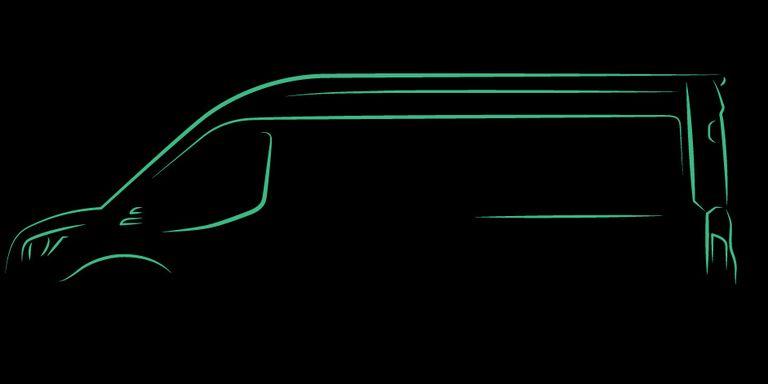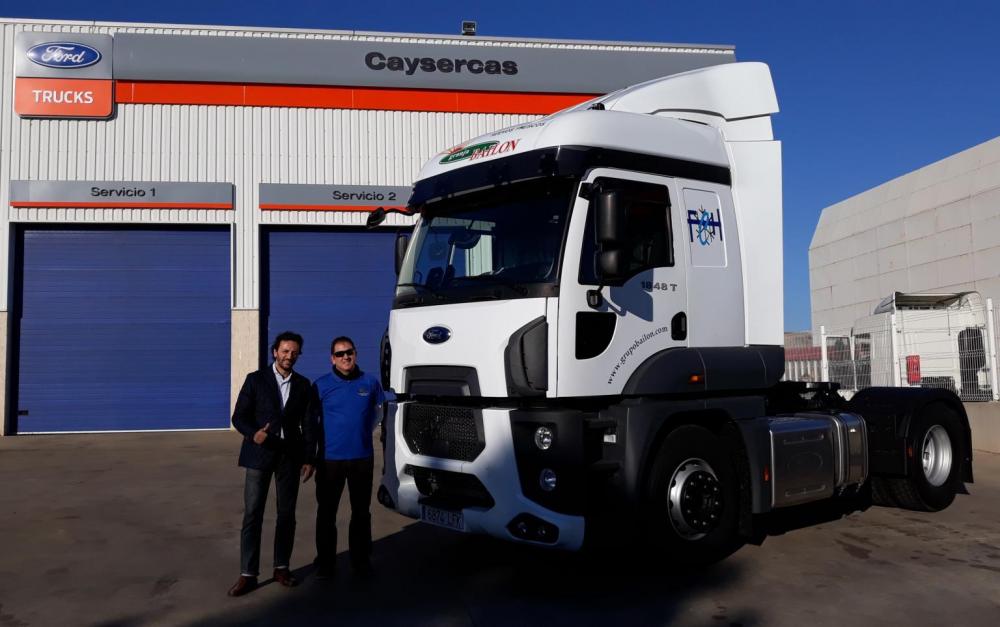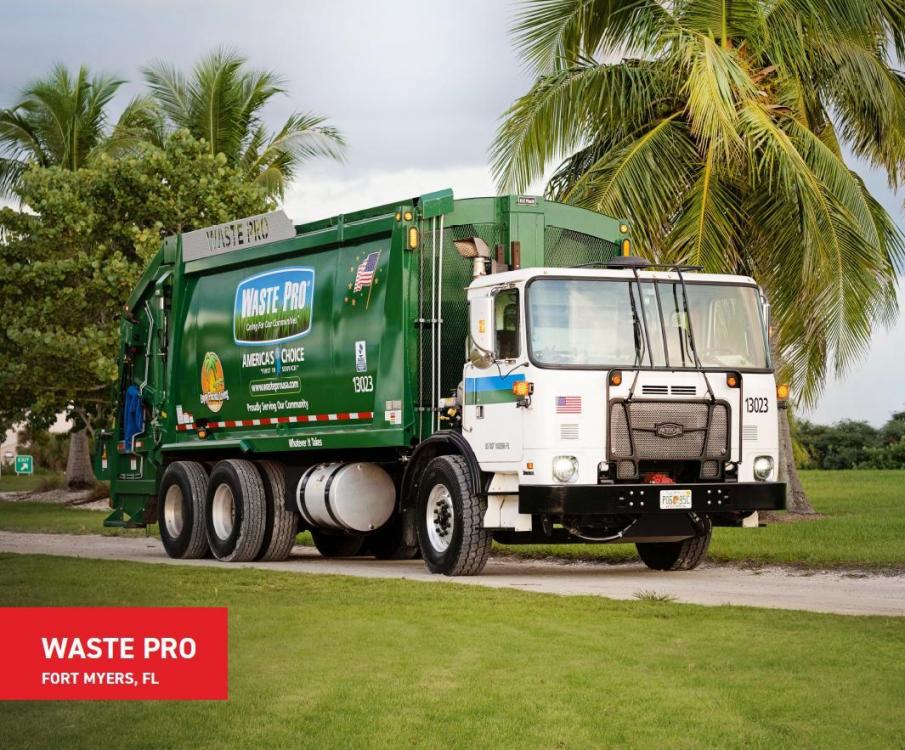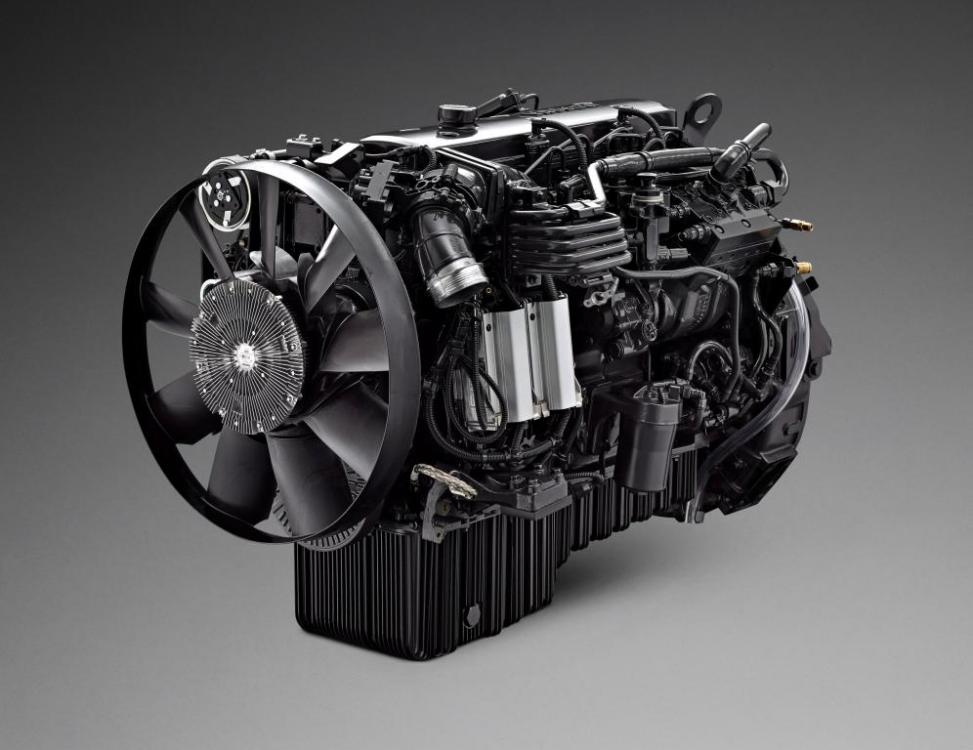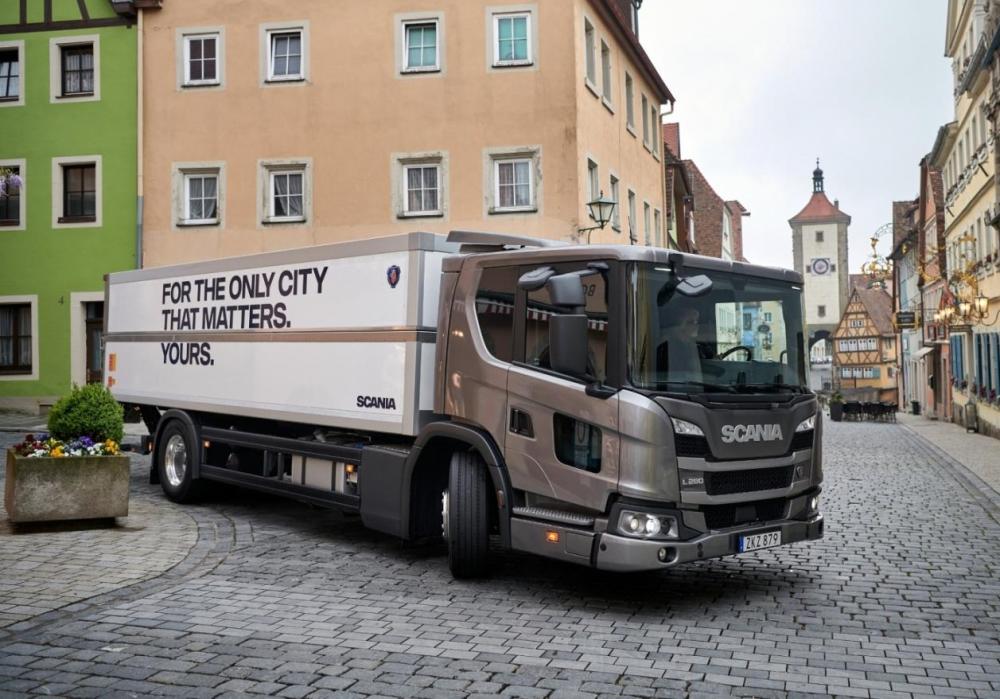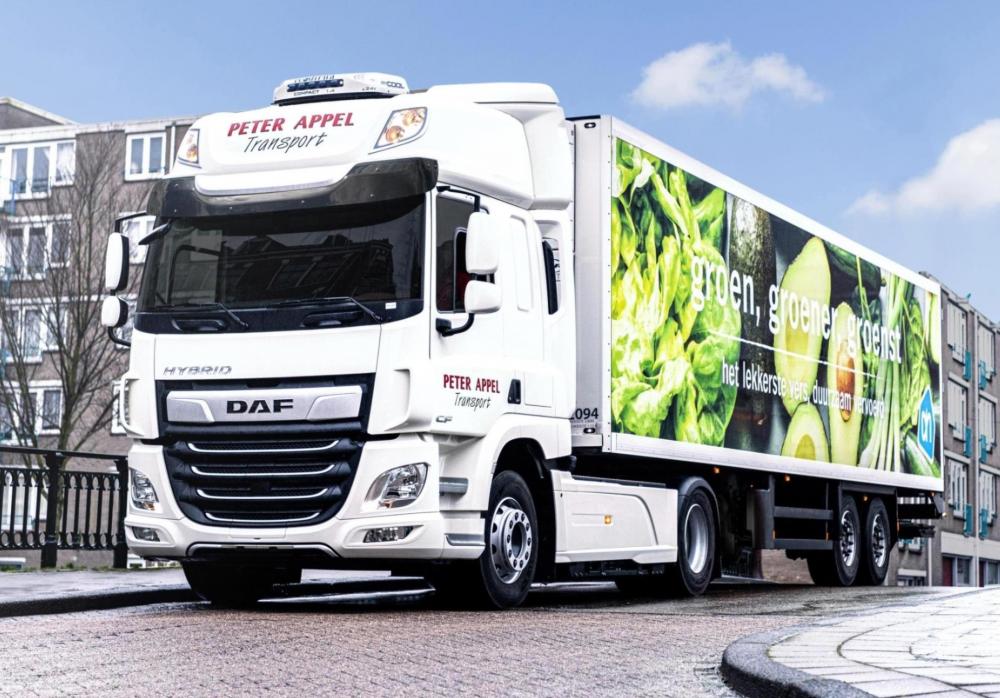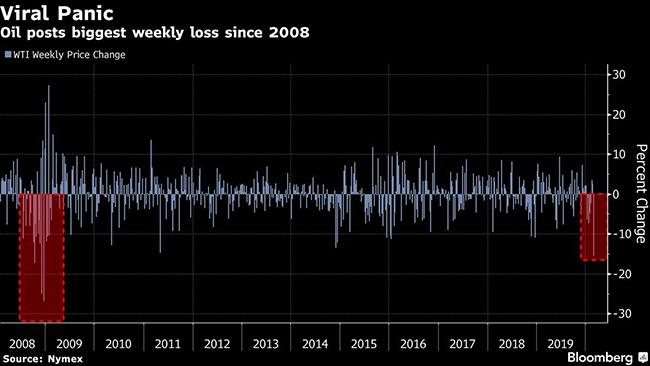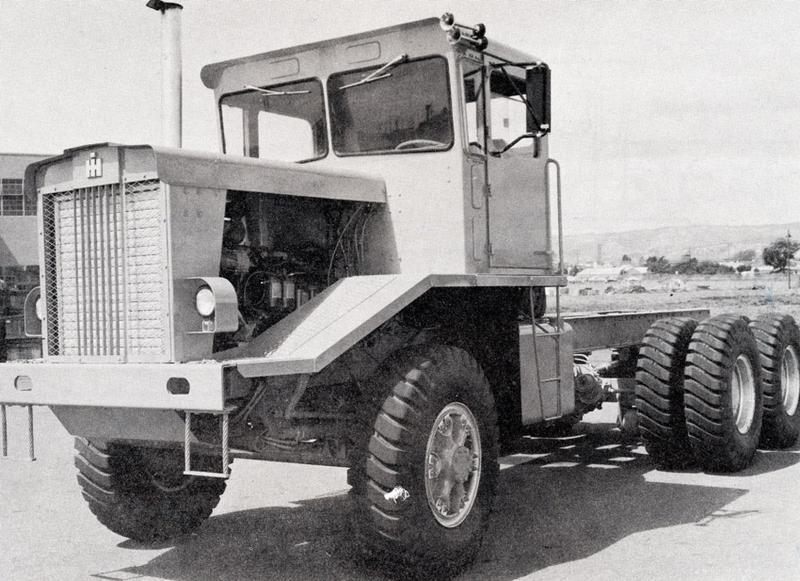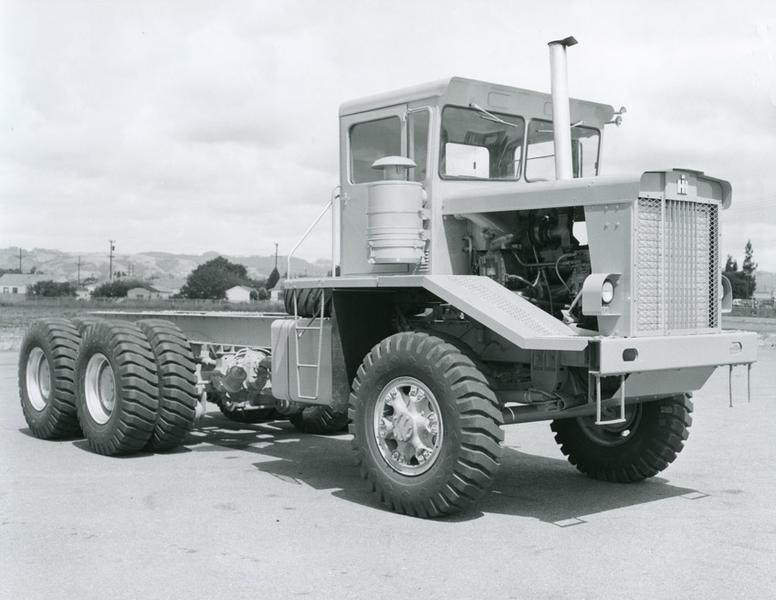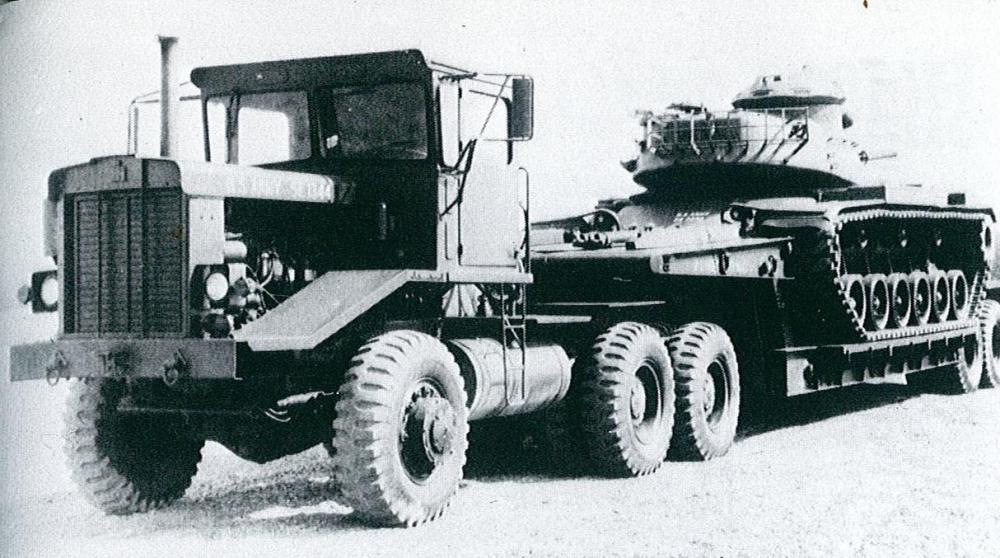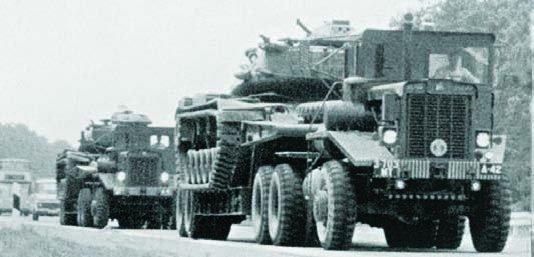
kscarbel2
Moderator-
Posts
18,927 -
Joined
-
Days Won
114
Content Type
Profiles
Forums
Gallery
Events
Blogs
BMT Wiki
Collections
Store
Everything posted by kscarbel2
-
Tomi Kilgore, MarketWatch / March 4, 2020 Shares of Navistar International Corp. (NAV) were indicated down a little over 1% in pre-market trading Wednesday, after the commercial truck maker reported a bigger-than-expected fiscal first-quarter loss, but said it had received an unsolicited buyout bid during the quarter. Navistar said the bid was from alliance partner TRATON, and the board of directors is "carefully reviewing and evaluating the proposal." For the quarter to January 31, Navistar swung to a net loss of $36 million, or 36 cents a share, from net income of $11 million, or 11 cents a share, in the year-ago period. The FactSet consensus for net loss per share was 31 cents. Revenue fell to $1.84 billion from $2.43 billion, citing declines in sales of Class 6-8 trucks and buses, but topped the FactSet consensus of $1.78 billion. Navistar reiterated its 2020 revenue outlook of $9.25 billion to $9.75 billion. Navistar stock has rallied 12.2% over the past three months through Tuesday, while the S&P 500 has lost 3.5%.
-
Ford Announces 2022 Transit Electric Van for U.S. Connor Hoffman, Car & Driver / March 3, 2020 Ford has announced that it will add an electric Transit van to its lineup for the 2022 model year. The van comes with access to the FordPass Charging Network, the largest public network in the country. The electric van can be had in a variety of options including cargo van, cutaway, chassis cab, and with three roof heights and three body lengths. Ford is adding an electric model to the Transit cargo van lineup in the U.S. and Canada for the 2022 model year. Ford says that the electric Transit, which will be built in the United States, will help companies achieve their sustainability goals. Like the Mustang Mach-E, the electric Transit will come with access to the FordPass Charging Network. As of now, it's the largest public network in the country, featuring 35,000 plugs at 12,500 charging stations in the U.S. and parts of Canada. The electric Transit will come equipped with a FordPass Connect modem featuring a 4G LTE Wi-Fi hotspot that can record driver data for the van's managers. They can do GPS tracking, geofencing, and vehicle diagnostics. Additionally, the electric vans come standard with pre-collision assist with automated emergency braking plus pedestrian detection, forward collision warning, post-collision braking, lane-keeping system, and auto high-beam headlamps. Customers can choose from a variety of configurations with the electric Transit, including cargo van, cutaway, and chassis cab, with three roof heights and three body lengths. Pricing, photos, and other details haven't been announced yet. .
-
Hannah Lutz, Automotive News / March 3, 2020 DETROIT — General Motors is upping the power of its Chevrolet Express and Low Cab Forward trucks and enhancing its medium-duty trucks in an effort to build on a 67 percent gain in its U.S. commercial fleet sales since 2013. For 2021, the Express and Low Cab Forward will be available with a 6.6-liter V-8 gasoline engine, the same offered on the 2020 Silverado HD pickup. The engine will give the Express 17 percent more horsepower and 24 percent more peak torque than with the 6.0-liter engine it replaces, and it will give the Low Cab Forward 18 percent more horsepower and 14 percent more peak torque, GM said at the Work Truck Show in Indianapolis on Tuesday. Commercial customers "have to haul a lot, particularly with Express Cargo," said Ed Peper, U.S. vice president of GM Fleet. The 6.6-liter engine, "we think, based on how well it's done in the pickups so far, that it will be even more of a lift for us in the Express." Nearly three-quarters of current Express owners upgraded to the 6.0-liter V-8 engine, and Chevy expects a similar take rate for the 6.6 liter. The medium-duty Silverado chassis cabs will be updated with a 23 percent increase in hauling capacity, a mechanical locking rear axle that improves traction by automatically locking when a rear tire slips, and longer axle-to-end-of-frame options for the two shortest wheelbases. Additional changes include extended mirror arms for improved visibility, left-hand power takeoff capability and an available auxiliary switch bank with six additional upfit switches in headliner. GM has committed nearly $2 billion toward fleet vehicle production in recent years with the following investments: $150 million in Flint, Mich., to increase annual production capacity of heavy-duty trucks by 40,000 units $175 million in a facility to be built in Brookville, Ohio, to produce engine components to increase production of the 6.6-liter Duramax diesel V-8 engines $1.5 billion, mostly toward the Wentzville, Mo., plant, for future midsize pickup and van improvements. "With the product changes for 2020, we are on track for another year of strong commercial growth," Peper said.
-
There are many different ones. When you presented your particular truck's model and serial number to your local Mack dealer's parts department, did they say it was no longer available (NLA) ?
-
Former Navistar CEO to pay $500,000 in SEC settlement Chris Prentice, Reuters / March 2, 2020 WASHINGTON -- The Securities and Exchange Commission (SEC) on Monday said the former CEO of Illinois-based Navistar International Corp. will pay $500,000 to resolve charges of misleading investors. The SEC charged Daniel Ustian and Navistar in 2016 with misleading investors about Navistar's development of an advanced technology truck engine that could satisfy U.S. pollution standards, the regulator said. Navistar International Corp agreed in 2016 to pay a $7.5 million fine for the charges. The case arose from Navistar's failure to win EPA approval of a heavy-duty diesel truck engine designed to meet Clean Air Act standards adopted in 2010. A lawyer for the former Navistar executive did not respond immediately to a request for comment. Without admitting or denying the charges, Ustian agreed to give up $250,000 in ill-gotten gains and pay another $250,000 as a penalty, the SEC said in a statement. The commission's order also prohibits Ustian from violating the antifraud provisions of securities laws. A court will later decide whether to bar Ustian from serving as an officer or director of a publicly traded company, the regulator said.
-
Ford Trucks Spain Press Release / March 2, 2020 Spanish hauler Friocargo Herbatra liked his first Ford truck so much, he did not want long to get a second unit from our heavy truck dealer Caysercas, S.L.. This time, he purchased the first Ford Cargo model 1848T tractor registered in Spain. Many congratulations, enjoy it! .
-
With the calendar turning to March we celebrate Waste Pro USA, one of the country’s fastest growing privately-owned waste collection, recycling, processing & disposal companies. We are honored to support Waste Pro in the many communities they serve across the country. Always Up - Autocar Trucks .
-
Scania’s L-series now paired with Cummins DC07 6.7L engine
kscarbel2 replied to kscarbel2's topic in Trucking News
-
Scania’s L-series now paired with Cummins DC07 6.7L engine
kscarbel2 replied to kscarbel2's topic in Trucking News
Related reading - https://www.bigmacktrucks.com/topic/51894-let-it-be-lighter-–-scania-introduces-7-liter-engine/ -
Scania’s L-series now paired with Cummins DC07 6.7L engine
kscarbel2 posted a topic in Trucking News
Scania Group Press Release / February 28, 2020 The innovative low-entry Scania L-series can now be ordered with the DC07 engine A solution for distribution, waste and construction in congested city areas where safety, ergonomics and low weight are in focus In combination with the Scania City Safe Window, camera systems and trained drivers, this constitutes an optimal solution for urban applications Scania’s kneeling L-series has all the capabilities that are required of a truck designed for urban areas. With the introduction of the DC07 engine also for the L-series, the load-carrying capacity now increases by some 360 kilos. It is available in three different power outputs: 220, 250 and 280 hp. With the introduction of the L-series cabs in 2017, Scania made a strong mark in the urban heavy commercial vehicle segment. This was something new – a modularised, low-entry truck with all the capabilities that characterise Scania but with the driver – and boarding – brought down to street level. The L-series affords excellent cross-cab access and relieves physical driver strain while also enabling them to really interact with others, eye-to-eye, in busy traffic environments. “Initially, we primarily focused on certain applications with slightly heavier operations by offering the L-series with our five cylinder, 9-litre inline engines,” says Stefan Lindholm, Senior Product Manager, Scania Trucks. “However, what assumed already from the outset was later confirmed. There is a demand for solutions based on the lighter and more flexible 7-litre engine as well.” True Scania The Scania DC07 was first introduced in 2017 and initially only offered in combination with Scania’s P-series cabs. It is a light-weight, robust and modern inline six engine with a swept volume of 6.7 litres. It offers up to 1200 Nm of torque already from 1050 r/min in its most powerful 280 hp iteration. It features Scania’s in-house designed exhaust gas aftertreatment system with SCR-only technology and can be fitted with engine-driven PTOs. The DC07 was immediately praised by media and customers alike for its smooth performance, low noise and fuel-efficiency. “Yes, it was very well-received,” confirms Lindholm. “It’s Scania’s smallest truck engine in a long time. But it still carries all the well-known brand characteristics: class-leading fuel-efficiency, our low-rev philosophy and the ability to run on 100 percent HVO or FAME, out of the box, with up to 90 percent carbon-dioxide reduction.” Downsizing trend A driving force behind the increased demand for “city solutions” are local regulations and a growing awareness about safety: “Hauliers operating in city areas are facing stricter – and fully justified – demands regarding noise, emissions and the ability to integrate in demanding traffic and interact with pedestrians and cyclists,” says Lindholm. “An L-series tipper truck with a crane, propelled by a DC07 and with cameras and a Scania City Safe Window in the passenger door, can be the ideal maintenance vehicle.” Scania believes that typical customers for the new combination will be found amongst hauliers and entrepreneurs that wish to ensure flawless daily operations in in urban areas. These are companies that distribute goods, collect refuse and are active in building or maintaining infrastructure. In these types of operations, good visibility, superior driver environment in combination with favourable total operating economy are decisive. Made for the city L-series cabs are available in three different roof heights: low, normal and high. If ordered with the kneeling function, it takes just one step to enter into the cab with a floor height around 80 centimetres. Typical axle configurations for urban application rigids are 4×2 or 6×2*4 (with Scania’s electrically steered tag axle). “Trucks such as there often operate in distribution, but we see more and more tailor-made, construction-oriented trucks as well,” says Stefan Lindholm, Senior Product Manager, Scania Trucks. “Many construction vehicles spend most time on congested city streets. Here, an L-series tipper with the DC07 280 hp and the right gearing could be ideal. Add Scania Zone as well to support the driver, and you have a full-fledged Scania beast for the asphalt jungle.” Scania Zone is a position-based service for automatic vehicle adjustment. It supports drivers in adhering to traffic and environmental regulations, enabling sustainable truck operations with increased safety for residents. . -
DAF Trucks has started field testing the CF Hybrid with the aim of gaining experience in daily use. The Dutch transport operator Peter Appel is now using two of these innovative trucks to supply supermarkets in the heart of the Netherlands. The DAF CF Hybrid is 100% electric in urban areas and uses clean diesel technology out of town. The innovation truck combines best of the both worlds by driving with ‘zero emissions’ in town, thereby ensuring both long range and flexibility outside urban areas. The DAF CF Hybrid innovation trucks are equipped with the extremely efficient 10.8 litre PACCAR MX-11 diesel engine (330 kW/450 hp), a ZF electric motor (75 kW/100 hp, peak power: 130 kW/175 hp) and a special ZF TraXon gearbox for hybrid powertrains. Recharging while driving or at charging station The electric motor gets its energy from a 85 kWh battery pack, which recharges when the diesel engine is being used. During diesel operation the electric motor functions as a generator and delivers energy to the battery pack. In the future it will also be possible to charge the battery at a (fast) charging station. When the battery is fully charged, the DAF CF Hybrid –– has an electric range of 30 to 50 kilometres, depending on the total weight of the truck-trailer combination, which is more than enough to drive into and out of urban areas without producing any tailpipe emissions. Smart energy management Outside of town the CF Hybrid is powered by the clean and efficient PACCAR MX-11 diesel engine, which offers a long range. In addition, the hybrid technology delivers extra savings on fuel consumption thanks to smart energy management. The energy that is generated by the engine brake as well as Down Hill Speed Control is used by the electric motor to support the diesel engine. This is beneficial both in terms of fuel consumption and CO2 emissions. Suitable for longer journeys “Together with our client, Albert Heijn, we are always looking for ways to reduce our CO2 footprint,” says Marcel Pater, fleet manager at Peter Appel Transport, which boasts a total of 680 trucks. “While the electric trucks are ideal for urban distribution, the hybrid technology is preferable for longer routes. In town the DAF CF Hybrid operates fully electric, and the truck’s diesel engine means it can travel to and from the different distribution centres within the Netherlands and abroad without any problems.” Daily use by clients “With a cleaner future in mind, for DAF there is no one single technological solution for the broad spectrum of transport requirements,” according to Ron Borsboom, executive director of Product Development. “That’s why we are testing different technologies. Fully electric is a good alternative for urban distribution, clean diesel technology an excellent option for longer distances – partly due to new types of fuel – and for the long term we are having a closer look at hydrogen as well. With the field test of the CF Hybrid, we want to assess not only its electric/diesel technology performance but also how suitable it is in terms of daily use by our clients.” .
-
Cummins Press Release / February 24, 2020 Cummins structural engine range for agricultural tractor applications now spans 90 – 326 hp / 67 – 243 kW. The F3.8, F4.5 and B6.7 Performance Series structural engines have been optimized for minimal weight alongside maximum strength for engine and driveline durability. Cummins next generation Performance Series technology significantly improves the capabilities of our F3.8 engine, with 33% more power and 31% more torque versus the previous model. Pushing the power up to 173 hp has made the F3.8 a leader in its class, delivering high machine capability and substantial productivity benefits for farmers who operate Cummins powered equipment. Moving up the range, the 6-cylinder B6.7 Performance Series engine surges ahead with up to 326 hp and a peak torque of 1375 Nm – a 30 percent increase over its predecessor. Cummins’ electronic control capability means that performance of all structural engines is tailored for on-farm operation with the optimum power bulge and torque back up available to suit tractor duty cycles The F3.8, F4.5 and B6.7 structural engines meet the latest EU and EPA emissions standards. .
-
I would love to own that D5N 6x4 tractor. Reference: https://www.bigmacktrucks.com/topic/31209-when-the-dodge-boys-sold-trucks-down-under/
-
Oil Plummets in Worst Week Since 2008 Amid Coronavirus Panic
kscarbel2 replied to kscarbel2's topic in Trucking News
Putin (Gazprom) is mostly exporting natural gas to Europe and China, not oil. Some very big names (good companies) in U.S. oil and gas are on or near the floor. We're going to be consuming oil and natural gas for many more years to come. -
Heavy Duty Trucking (HDT) / February 27, 2020 Freightliner Custom Chassis Corporation has announced it is partnering with Proterra to develop an “enhanced, production-ready version” of its all-electric MT50e truck chassis for . FCCC said the MT50e will use a Proterra high-performance battery system. Factory-installed, the fully integrated electric power system provides 226 kWh of energy capacity in all-electric, zero-emission drive package. Built on FCCC’s existing MT platform, the all-electric MT50e will offer GVW ratings from 16,000 to 23,000 pounds, with no reduction in cargo volume capacity. The vehicle is designed to deliver over 125 miles of driving range and can fully charge in about three hours with DC fast-charging, said FCCC. “The new MT50e blends the efficiency and performance of an electric vehicle with the undisputed strength and ruggedness that’s made FCCC the most reliable chassis on the market,” said Jeff Sather, president and CEO of FCCC. He added that the MT50e will “propel both us and our customers into an era of zero emissions for last-mile delivery vehicles.” “Fleet operators are looking to electrify delivery trucks today and there is growing industry interest in a high-performance electric chassis with an energy-dense battery system,” said Proterra CEO Ryan Popple. “The MT50e offers fleet operators a leading vehicle platform they’re familiar with, combined with proven electric vehicle technology and expertise from Proterra.” First shown as a prototype at the 2019 NTEA Work Truck Show, the MT50e is the first of several commercial electric vehicles that FCCC is planning to develop for use in various applications. A production-ready version of the MT50e chassis will be on display at this year’s NTEA Work Truck Show, running from March 4 to 6 in Indianapolis, at Booth #4447. .
-
Oil Plummets in Worst Week Since 2008 Amid Coronavirus Panic
kscarbel2 replied to kscarbel2's topic in Trucking News
This is a rare moment to buy oil (and gas) stocks extremely cheap and make some serious money. -
Transport Topics / February 28, 2020 Oil had its worst week since the financial crisis as panic over the coronavirus pandemic battered global markets. Futures in New York fell 16% this week, marking the biggest weekly drop since December 2008. The viral outbreak showed no signs of relenting, with the World Health Organization raising global risk to “very high” from “high.” The collapse of financial markets prompted U.S. Federal Reserve Chairman Jerome Powell to assure investors that the central bank is prepared to cut interest rates to mitigate the virus’ threat to economic activity. “A month ago, the concern was only China,” said Pavel Molchanov, energy research analyst at Raymond James & Associates Inc. “This meltdown is a fear of a global pandemic. The risk is we will see the same disruptions we saw in Asia, from travel restrictions to quarantines, materialize all over the world.” Oil prices have tumbled almost 27% this year on concerns the coronavirus outbreak will dent crude demand. OPEC and its allies have signaled the coalition could reach an agreement to stem the rout before meeting in Vienna next week. Saudi Arabia is reportedly pushing for collective OPEC+ production cuts of an additional 1 million barrels a day, of which it would bear the brunt. However, Riyadh’s proposal may not be enough to balance the oil market, according to a coronavirus-scenario analysis by Bloomberg Intelligence analysts Salih Yilmaz and Rob Barnett. The alliance’s overall compliance with production cuts has not been enough to support oil prices. The reemergence of Libyan barrels also remains a risk. “We may be too far deep for any OPEC cuts to have a meaningful impact,” said Peter McGinn, market strategist at RJ O’Brien & Associates LLC. “If the virus keeps spreading, that is just going to keep hurting demand and cause another wave of panic selling. A production cut could give it a bounce, but these lows will persist for the foreseeable future without a vaccine.” West Texas Intermediate futures for April delivery fell $2.33, or 5%, to settle at $44.76 a barrel on the New York Mercantile Exchange. Brent for April settlement, which expired Feb. 28, lost $1.66, or 3.2%, to end the session at $50.52 a barrel on the ICE Futures Europe exchange. The more active May contract fell 4% to $49.67. Brent’s so-called red spread — the difference between December contracts in consecutive years — sank deeper into bearish contango, settling at its lowest level since 2018. .
-
"The search for a suitable replacement for the aging [Mack] M123 series 10-ton 6x6 [tractor) lead to the purchase of some commercial models as interim vehicles. Known as the XM532E2, it was based on the commercial off-highway Model 8066 ["Payhauler"] by International Harvester, and used the truckmaker's own DTI-817 six-cylinder turbocharged and intercooled 375 horsepower diesel engine, with a torque converter-equipped Clark four-speed powershift transmission. Four ranges combined with four gears gave 16 forward speeds. A relative lightweight vehicle at 38,790 pounds, the XM532E2 had more than its share of maintenance problems and only remained in the U.S. Army's fleet about five years. Planetary gear axles were used with 14.00x24 tires. The wheelbase was a very short 160 inches, and the set-back front axle gave a 39 degree angle of approach. The XM532E2 was a relatively slow truck, at 31 miles per hour maximum speed, but the 220 gallon fuel tank gave it a 325 mile range. A 60,000 pound capacity hydraulic winch was mounted amidship for recovery operations. The tractor is seen in this picture coupled to a 55-ton capacity M524E1 trailer with a collapsible gooseneck, and carrying an M60A1 medium tank." .
-
Critics push U.S. to help Europe by taking more refugees
kscarbel2 replied to kscarbel2's topic in Odds and Ends
BigMackTrucks.com
BigMackTrucks.com is a support forum for antique, classic and modern Mack Trucks! The forum is owned and maintained by Watt's Truck Center, Inc. an independent, full service Mack dealer. The forums are not affiliated with Mack Trucks, Inc.
Our Vendors and Advertisers
Thank you for your support!



